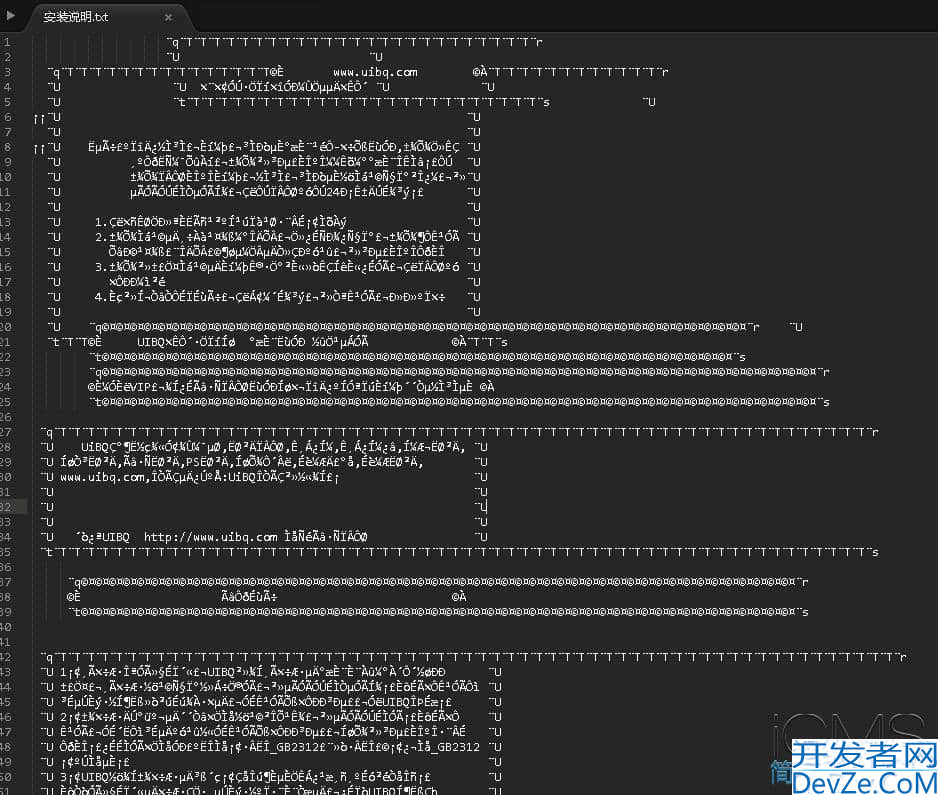实例讲解python读取各种文件的方法
目录
- 1.yaml文件
- 2.CSV文件
- 3.ini文件
- 总结
1.yaml文件
# house.yaml--------------------------------------------------------------------------
# 1."数据结构"可以用类似大纲的"缩排"方式呈现
# 2.连续的项目通过减号“-”来表示,也可以用逗号来分割
# 3.key/value对用冒号“:”来分隔
# 4.数组用'[ ]'包括起来,hash用'{ }'来包括
# 写法 1
house:
familhttp://www.cppcns.comy:
name: Doe
parents: John, Jane
children:
- Paul
- Mark
- Simon
address:
number: 34
street: Main Street
city: Nowheretown
zipcode: 12345
# 写法 2
#family: {name: Doe,parents:[John,Jane],children:[Paul,Mark,Simone]}
#address: {number: 34,street: Main Street,city: Nowheretown,zipcode: 12345}
"""Read_yaml.py--------------------------------------------------------------------"""
import yaml,json
with open("house.yaml",mode="r",encoding="utf-8") as f1:
res = yaml.load(f1,Loader=yaml.FullLoader)
print(res,"完整数据")
"""访问特定键的值"""
print("访问特定键的值",res['house']['family']['parents'])
print(type(res))
"""字典转换为json"""
transition_json = json.dumps(res)
print(transition_json)
print(type(transition_json))
2.CSV文件
269,839,558 133,632,294 870,273,311 677,823,536 880,520,889
""" CSV文件读取 """
""" 1.with语句自动关闭文件
2.文件读取的方法
read() 读取全部 返回字符串
readline() 读取一行 返回字符串
readlines() 读取全部 返回列表(按行)
3.读www.cppcns.com取的数据行末,自动加"\n" """
ihttp://www.cppcns.commport os
class Read_CSV(object):
def __init__(self, csv_path):
self.csv_path = csv_path
def read_line(self, line_number):
try:
"""【CSV文件的路径】"""
csv_file_path = os.path.dirname(os.path.dirname(__file__)) + self.csv_path
with open(csv_file_path, "r") as f1:
""" |读取某一行内容|--->|去掉行末"\n"|--->|以","分割字符串| """
line1 = f1.readlines()[line_number - 1]
line1 = line1.strip("\n")
list1 = line1.split(",")
return list1
except Exception as e:
print(f"!!! 读取失败,因为 {e}")
if __name__ == '__main__':
"""example = Read_CSV(r"\软件包名\文件名") """
csv = Read_CSV(r"\CSV_File\data.csv")
for i in range(3):
print(csv.read_line(1)[i])
csv1 = Read_CSV(r"\CSV_File\random_list.csv")
for i in range(3):
print(csv1.read_line(3)[i])
3.ini文件
# config.ini-------------------------------------------------------------------- [config_parameter] url=http://train.atstudy.com browser=FireFox [element] a=text class=css_Selector
import configparser;import os
""" 1.调用【configparser】模块"""
config = configparser.ConfigParser();print(f"config类型 {type(config)}")
""" 2.ini文件的路径"""
path1 = os.path.dirname(os.path.dirname(__file__))+r"\Ini_File\config.ini"
print(f"ini文件的路径 {path1}")
""" 3http://www.cppcns.com.读取ini文件"""
config.read(path1);print(f"config.read(path1) {config.read(path1)}")
"""【第一种】获取值"""
value = config['config_parameter']['url']
print('config[节点][key]:\t',value)
"""【第二种】获取值"""
value = config.get('config_parameter','browser')
print('config.get(节点,key):\t',value)
"""【第三种】获取所有值"""
value = config.items('config_parameter')
print('config.items(节点):\t',value)
""" 读取ini文件 """
imwww.cppcns.comport configparser
import os
class ReadIni(object):
def __init__(self, file_path, node):
self.node = node
self.file_path = file_path
def get_value(self, key):
try:
""" 1.调用【configparser】模块--->2.ini文件的路径
3.读取ini文件--->4.根据键获取值 """
config = configparser.ConfigParser()
path1 = os.path.dirname(os.path.dirname(__file__)) + self.file_path
config.read(path1)
value = config.get(self.node, key)
return value
except Exception as e:
print(f"!!! 读取失败,因为 {e}")
if __name__ == '__main__':
"""example = ReadIni(r"\软件包名\文件名","节点名") """
node1 = ReadIni(r"\Ini_File\config.ini", "element")
print(node1.get_value("class"))
总结
本篇文章就到这里了,希望能够给你带来帮助,也希望您能够多多关注我们的更多内容!







 加载中,请稍侯......
加载中,请稍侯......
精彩评论